A relaxed resource on astronomy and the universe we inhabit targeted for the writer of science-fiction. While we try to stick with science-as-we-know-it, we're always willing to bend it some for a good story.
Don't wanna be here? Send us removal request.
Note
I have a character in the southern hemisphere (Australia, specifically), and their history in the Navy makes them able to navigate by stars. Can you explain how that might work?
Celestial navigation, the skill of figuring out where you are by looking at the stars, works the same way in the Southern hemisphere as it does in the Northern - except for the lack of a ‘South Pole’ star.Knowing where North and South are is very very important. It’s where it all starts. In the Northern hemisphere, we have a Pole Star that seems to sit right above the North Pole of the Earth. It’s pretty easy to find.

Sometimes, the ‘Verse just decides to screw you over. Sorry, Australia. :-( You guys need to do a little work to find your South Pole. Those slackers in the Northern hemisphere got it so easy.However, that same ‘Verse has given the Southern hemisphere something almost as cool - the Southern Cross. Yep, the same one on the flag of Australia. It also appears on four other country’s flags, so it’s gotta be cool.
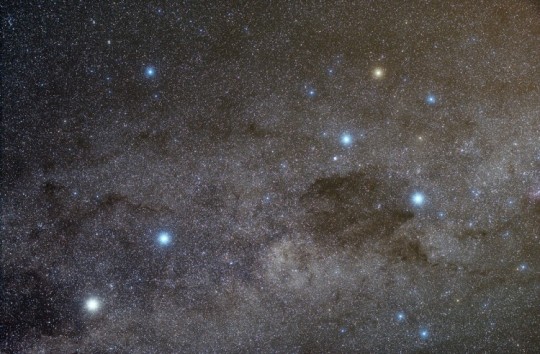
There it is - over towards the right of the image. The upper star of the cross is reddish-orange, the other three blue. Keep this in mind, as there are several ‘false crosses’ in the Southern sky that can confuse someone. Only accept genuine Southern Crosses for navigational accuracy.
The easiest method of determining where south lies involves drawing an imaginary line vertically from the reddish-orange star (Gamma Crucis - the closest red giant to Earth at 27 parsecs) through Alpha Crucis (the large blue double-star at the ‘bottom’ of the cross) and extending it down. The line should be 4 ½ times the distance from Gamma Crucis to Alpha Crucis.Be sure your line is drawn through the reddish star.
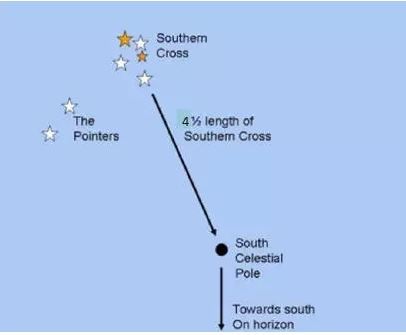
It would be easy for someone who had heard about using the Cross for navigation getting it wrong either by using one of the ‘fake crosses’ or by drawing the line through the wrong two stars. You can use the two bright stars to the left of the Cross (know as the Pointers - Alpha and Beta Centauri, two of the closest stars to Earth at 1.35 parsecs) to help ensure you’re doing it correctly.
Here’s a short video by an Australian that explains it.
youtube
Once you’ve found south, the other directions are easy.
51 notes
·
View notes
Note
In the case of a geostationary moon, how would that affect the tides (or anything, really) on Earth? (I'm assuming there'd be no tides at all?) Thank you!
You would be correct.
Kinda. A moon in geosync (assuming it’s large/close enough to actually effect tides) would still raise the water level of the oceans on both the side facing the moon and the side away from the moon, but as the planet would not spin around relative to the moon, there would not be the twice-a-day cycle of rising and falling water level like the Earth has.
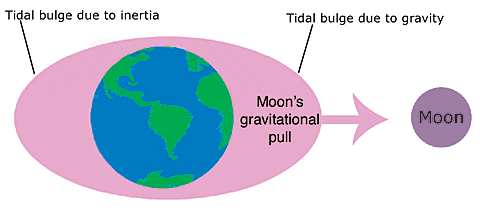
It would be the same as if the planet had no moon - tidalwise. Which means that there wouldn't be tidal pools and coastal environments would be more divided between the dry and we sides than they are on out Earth.
What this means to the type of life forms on this planet would be up to you.
If you want to know more about how tides really work, watch this video. It goes into why the ‘moon pulls on the oceans’ isn’t quite the correct reason we have tides.
youtube
51 notes
·
View notes
Note
Hi there! I'm really sorry to disturb you, but I'd love to write about this story that takes place in space, but... I don't know a lot about space. What are the basis I should learn before trying to write about it if I want to talk about space travel and element about planets and stuff? (I'm sorry... it's a terrible question, but I feel lost...). Thank you!
There’s a lot of space out there, and even people who dedicate their own lives to studying it still don’t know a lot about it. There’s always something more to learn, so don’t feel bad about not knowing much about it all.
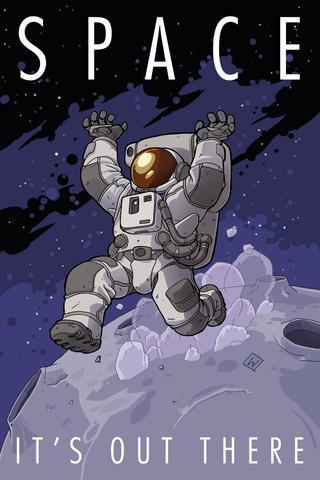
You don’t need to know a lot about space to write stories that deal with it, but knowing even a little will help you in getting some things more believable. So, even though I’d love for you to take an astronomy class, dedicate yourself to the universe and get a Ph.D in astrophysics (seriously, we need a lot more of them - see previous line about there being a lot of space to study), don’t think you need to become one just to write good stories.
Just like you don’t have to actually be an expert on Chicago to write good stories set there (just ask Jim Butcher), but a good Fodor’s travel guide will help.
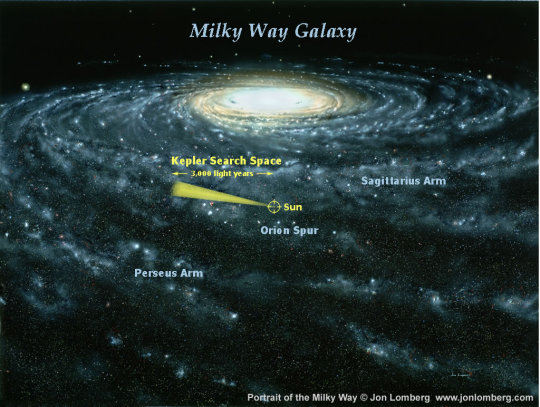
Here’s a few resources that you can use to learn more about space. These make the assumption that you know little about space or astronomy, yet give you a good background of how it works - certainly enough to support a good story. The internets is your friend!. There is a galactic crapload of resources available.
For a very basic, quick overview of the universe, watch _Powers of Ten_. It’s a film (from 1977, so forgive the fashions) that shows you the scale of the universe. It’s pretty big.
youtube
NASA’s StarChild website gives a nice overview of spacey things. It’s targeted towards young children, so it’s cute and fun as well as informative. Be aware that the webdesign is right out of the 90′s. :-)
ThoughtCo has a nice basic overview of the universe. It’s more informative, but less fun, than the StarChild pages.
MIT has a basic astronomy course online, to be studied at your convenience. Do be aware that this is the same course they teach on campus, so there will be math.
The Physcs Forum has a nice section with advice about getting the science in your science-fiction to be more believable. They also have a good list of resources.
If you can swing it, I’ve heard very good things about Launchpad. It’s a writer’s retreat where people who actually work/teach in astronomy run workshops for authors who want to lean more about the universe. You need to apply, but if they take you, it’s free. All you have to do is get to Wyoming.
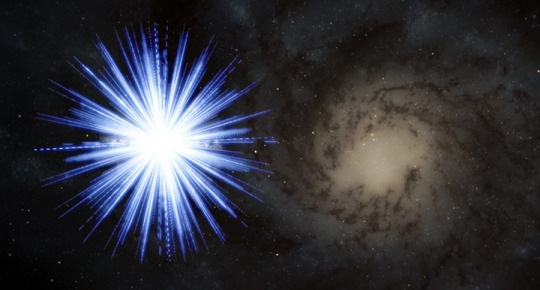
Of course, you can always start where I did - Cosoms by Carl Sagan. Read the book, or watch the TV series (or even better - do both). This will give you a great overview of the universe. Then follow up with the newer Cosmos with Neil deGrasse Tyson.

And don’t forget that you can always write your story, then get a friend who does know astronomy to read through it and point out things that could be done better. Subject Matter Experts are great resources. Use them
Enjoy your universe. Write cool stories.
42 notes
·
View notes
Note
Hi! In my current story, I have two Earth-like planets (probably a bit smaller than Earth) that orbit each other close enough to see each other (a bit bigger than the moon). Is this impossible, or how far apart would they need to be? Could anyone survive on these planets? Thanks in advance!
As long as the two planets were farther than their Roche limit from each other and closer than their Hill sphere, they would orbit each just other fine.
However, if they were as close as their Roche limits would allow (that’s about 6400 km for the Earth), they’d be quite un-nice places to be. Tidal forces would be extremely strong and they would be planets full of earthquakes, volcanoes, and devastating tides.
Actually, that sounds pretty cool. :-)For a more friendly pair of planets, I’d have them a bit farther apart - about Earth-Moon distance. If the Earth had a twin-Earth that was at the distance of the Moon, both planets would orbit each other quite nicely, and life could continue on each.
There would be a couple of differences, however. The full twin-Earth would look thirteen times larger than the full Moon (in area - about 3.6 times in diameter) and be a lot brighter. The twin- Earth would shine about 33 times brighter than the full Moon. Nights would be very well lit.
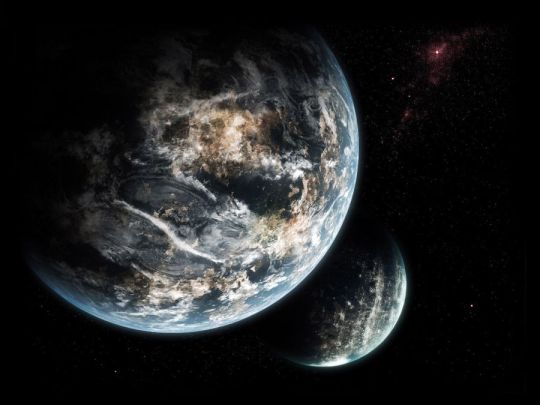
There would be much larger and much stronger ocean tides. Tides would cover much more land than they do now, and cities would be built farther from the coasts. There are places on Earth that have very strong and dangerous tides, and these would be even more dangerous when powered by the twin-Earth. Of course, twin-Earth would also have larger tides as well.Each planet could have more earthquakes and volcanoes (as they’re being gravitationally flexed by their twin), but the might not be that much of a problem. The geologies of planets can be pretty flexible, so you’d get to decide that. Make one nice and stable and one a volcano hell, and it’d be believable.
If twin-Earth and Earth had always been together, they might be tidally locked to each other. Each would hang in the sky at the same place, with the same sides facing each other. Each would have a day as long as a month.
Or not. Maybe they started out with a lot of rotation and there hasn’t been enough time for them to lock into each other. Up to you. They’re your happy little planets,

81 notes
·
View notes
Note
Is it possible for a planet to orbit another bigger planet and sustain life???
Yeah, almost certainly possible. We haven’t actually found any that do (but we are looking hard), but we know of no reason why it couldn’t be.
There would be some complications - your moon might be orbiting a very large planet (like a gas giant) and might be tidally locked, and you’d have to worry about the radiation belts that might exist. But generally, if the planet is the right size, the right distance from it’s sun, and has the correct atmosphere, then it can be orbiting - at a safe distance - another, larger planet.
70 notes
·
View notes
Note
Hey, can you explain everything that is to be known about black holes?
Everything? I dunno, that’s a lot of stuff.
Well, not really. Although we know quite a bit about black holes, we really know only about the stuff around them. As for the black hole itself, its a bit more difficult to learn about things that almost don’t exist. Black holes are a very large mass that has collapsed on itself so hard that it’s pulled the covers of space-time over itself and disappeared. All we can see is the gravity field that it left behind.
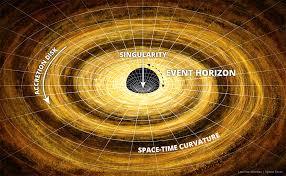
However, what I can do is direct you to some really good resources that can explain singularities.
NASA - of course - has a good page about the basics of singularities. It’s labeled ‘for kids’, but I’ve always turned to pages like this when I’m learning the basics of a topic.
A more in-depth - and therefore slightly more difficult to understand - write-up about singularities can be found on National Geographic’s site.
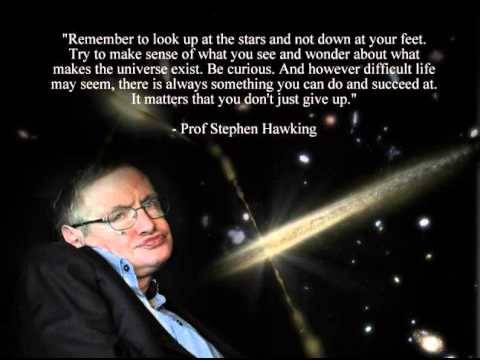
If you like that, don’t be afraid to go to Stephen Hawking’s site, and read one of his writings on black holes. Some of his ideas are unproven, but are fascinating and could easily be true. He’s able to take complicated sciency-stuff and write quite clear explanations for it. Think about reading his book on the whole universe. It’s surprisingly understandable to everyone.
But, if you’ve only got a few minutes, you can take in a couple of animated lectures by Hawking. They’re from the BBC, so you know they’re good.

33 notes
·
View notes
Text
How to Fly the Space Shuttle
If you have a story set on a space shuttle, or any near-future space ship or space station, a perusal of NASA’s Shuttle Crew Operations Manual can help you keep the details realistic, and may even spark new ideas.
Taking you from the most basic overview of a shuttle mission (page 33) to the details of orbital docking systems (page 673) to the details of the Personal Hygiene Kit (page 209).
1161 pages of awesome engineering. Enjoy this look at the most complicated machine ever built by humanity.
https://www.nasa.gov/centers/johnson/pdf/390651main_shuttle_crew_operations_manual.pdf
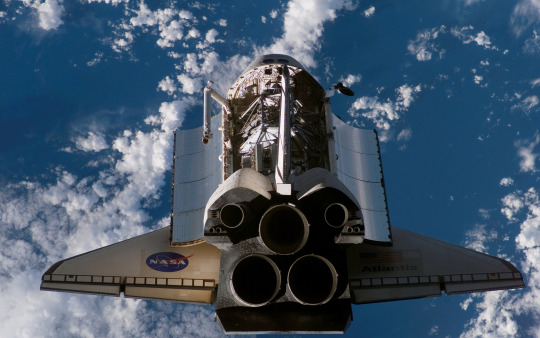
95 notes
·
View notes
Note
Hi! My story's set on a spaceship (in the future) with some very space-savvy characters, so I'm trying to get my astronomy as accurate as possible. I tried doing some google scholar searches but couldn't figure out, is the "space roar" caused by the CMB, something else, or is it still a total mystery? Thank you!
Space is weird.I mean it. There’s no ‘but’ or ‘and’ after that phrase. Indeed, the more we learn, the weirder it gets. Isn’t that right, Dr Haldane?
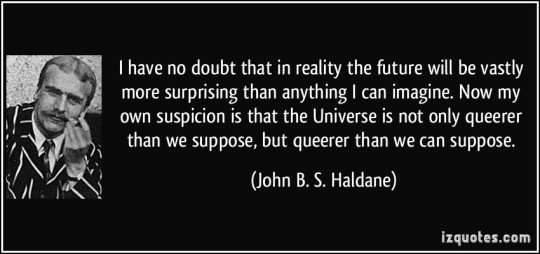
Dr. Haldane said that in his book Possible Worlds and Other Papers, published in 1927. In the last hundred years, we’ve seen that he’s quite correct.
The Space Roar (yeah, I capitalize it) is one of those things that are much weirder than we can suppose. For those who don’t know about the Space Roar, that’s okay. No one knew about it until 2009.
NASA sent up a radio wave detector attached to a high-altitude balloon. It’s mission was to get above the atmosphere (which blocks a lot of radio frequencies) and listen to the faint radio waves emitted by ancient stars.
What it found was that the universe was much louder in the radio signals than anyone expected - like six times louder than our models of the universe expected. The place is just lousy with radio energy.
And we have no idea why.
Is it part of the cosmic microwave background that we didn’t know about before? A type of energetic astronomical phenomenon that we’ve never seen? Leakage into our universe from other universes or some type of hyperspace dimension? The universe ate something that disagreed with it and it burped?
Or something even weirder? It could be almost anything.
Almost any reason for it, if presented well in a story, are quite plausible. It’s still a mystery, and probably will remain one for quite a while.
Of course, investigating the Space Roar is also a great reason for a starship crew to be jaunting off into the unknown.
40 notes
·
View notes
Note
Hi, love this blog! Thank you so much for running it! I have a question about star constellations: do they look the same from the surface of Earth and from the Moon? Thanks!
The big dark looks exactly the same from the Earth or the Moon, except on the Earth, you see the Moon in the say, and on the Moon, you see the Earth in the sky.
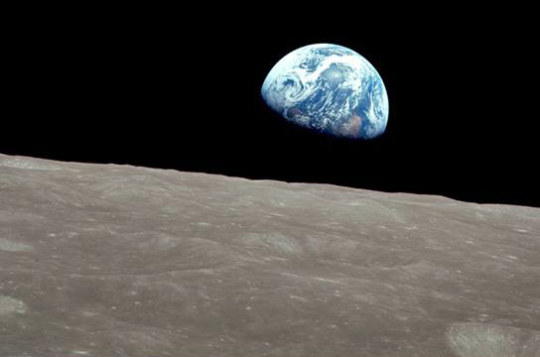
(Earthrise, Apollo 8, NASA)Otherwise, the stars are comparatively so much farther away that the stars and constellations look the same from any planet in our solar system. Of course, when you get way out towards Pluto, the Sun starts to look like just a very bright star (still the brightest in the sky), and not the glowing huge deathball of nuclear fusion that it really is.
However, once you start going to other stars, the constellations will start to look very different. Constellations look like they do only from specific places. The stars that make up a constellation may not really be close to each other at all. They only look that way from Earth (or near Earth). Each of those stars may be hundreds - or thousands - of parsecs from each other.
The further you go from our solar system, the more different they start to look. By the time you’re a few dozen light-years away, most of the constellations we know will look different - stretched or skewed. Go around to the ‘side’ of a constellation, and you couldn’t even recognize it.
From our nearest neighboring star system (Alpha, Beta, and Proxima Centauri), our own Sun would be part of the constellation of Cassiopeia.
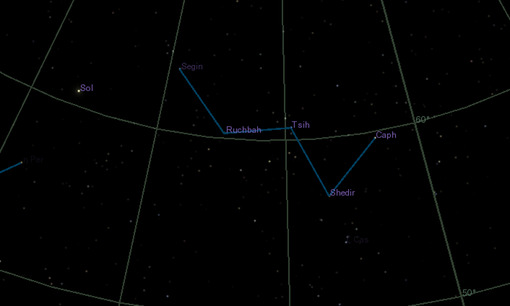
Here’s a short video that shows several constellations and how they would look from different angles.
youtube
There is a great astronomy program - Celestia - that allows you to see what the sky would look like from other stars. I’ve used it in my RPGs to show constellations that are important to the cultures of the people that live on different planets in different stellar systems. It’s a pretty easy program to use, and it’s free. If your story is set in our own galaxy, it can be quite useful.
The constellations in the sky of a planet orbiting another star would be a reflection of that species and cultures ideals, dreams, stories, and mythology - just like the constellations of our night sky.
60 notes
·
View notes
Note
Imagine: an earth-like, inhabited planet slowly grows uninhabitable over hundreds of thousands of years and the atmpsphere no longer supports life. Would it be possible for that change to have made it easier for stuff to enter the atmosphere? To face less (but still some) resistance? I'm not really wanting to just straight-up weaken the atmosphere, but I need a space ship to crash on this planet and not burn up all the crew on entry while also being terraform-able. Thanks so much!
There are a couple of ways an atmosphere can change to make the planet less inhabitable for life-as-we-know-it.
1. The atmosphere can change it’s composition. For example, volcanic eruptions could kick enough bad stuff (sulfur dioxide and hydrogen sulfide can be very nasty) into the air. It would take a lot of volcanoes and quite a bit of time, but it’s plausible. Substitute regular asteroid or cometary impacts kicking up nasty stuff if you prefer that.
2. The atmosphere can get thinner. For many reasons the planet’s atmosphere is getting thinner. This could be from an increase in solar activity or a weakening of the magnetic field around the planet allowing the solar wind to blow the atmosphere away. Maybe the gravity of the planet isn’t strong enough to hold an atmosphere for long and the air has been escaping to space for a long time (it’s been calculated that if we gave our Moon a breathable atmosphere, it would eventually escape into space after a couple of million years). This is the only way to make it easier to get to the surface from space.
However, it’s entirely plausible to have a spaceship built to encounter a mostly-uncontrolled reentry into a planets atmosphere and protect it’s crew. A civilization that can build real spaceships probable has the materials technology to make stuff that can survive a few minutes of very very high temperature of reentry.Mind you, the ship might not be in any shape to re-fly, but that can lead to a great story about a scrappy bad of survivalists on a desolate planet.

Crashed spaceships surviving a crash onto a planet are a staple of science fiction stories, and are completely plausible.
21 notes
·
View notes
Note
i've done a little research on whether tidally locked planets can support life and i understand there is a 'twilight zone' but would such a slow spinning planet even be able to produce a strong enough magnetosphere to keep its atmosphere from stripping away? thanks :)
Tidally-locked worlds are kinda weird, and it’s mostly up-in-the-air as to whether such a planet could have live. I’ve answered a question about the habitability of them, and it seems that some of them might, possibly be able to support life.
A planet’s magnetosphere is generated by it’s rotating metallic core. It’s possible for the crust to rotate at a different rate and speed as the metallic core. Indeed, Earth’s metallic core even has different parts rotating differently.
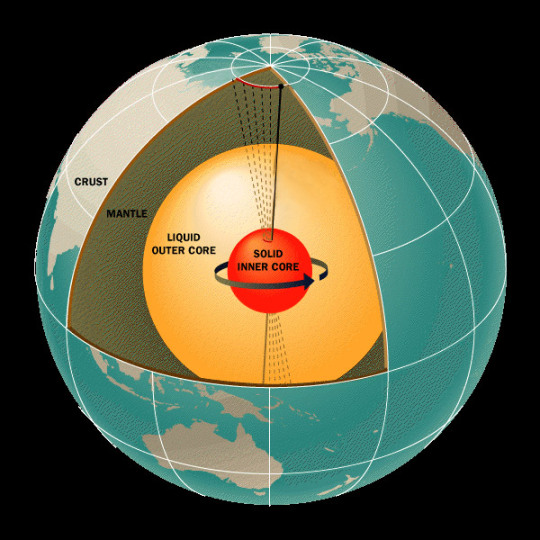
So, even if a tidally-locked world is rotating slowly (it rotates once as it makes one orbit), it would still be possible for it to have a magnetosphere.
Which is a good thing. Radiation can be icky to living organisms.
27 notes
·
View notes
Note
how does the type of star + the light it emits affect what kind of plant grows on its orbiting planet? i read somewhere that the trappist-1 star gives off a red/ orange light and therefore the plants would grow black?
Darn good question! Once we find a planet with different types of plants under a different type of star, we’ll have an answer. :-)Until then, all we can do is make some educated guesses.
Plants under a dim red sun (or any sun, actually) would want to absorb as much energy as possible since the red wavelengths are the low-energy side of the spectrum. Black absorbs all visible wavelengths, and so, logically, would be the most efficient color to be.

But that assumption doesn't always work out. Evolution doesn’t choose for the ‘most efficient’ solution, it chooses for the ‘best for now’ solution.
Our Sun puts out most energy in the yellow-green wavelengths, so you’d expect that Earth plants might be reddish or black, absorbing all the higher-energy yellows and greens and blues. But they aren’t.
Enter our green friend, chlorophyll.
Chlorophyll is a comparatively poor absorber of green light - which seems counter-intuitive. Why would plants shun much of the higher energy green light (they reflect much of it - which is why plants are green)? Shouldn't they be red or yellow in order to absorb greens and blues, which are of higher energy?
Plants use chlorophyll (instead of a chemical that absorbs greens better) for a very simple reason - it works ‘good enough.’

So, maybe plants under a dim red sun will be black. Or they may be green, as chlorophyll works to absorb those reds really well. Or they may be some other color because it works ‘good enough’ for the plants in that ecosystem.
We just don’t know yet. Which means any color you want plants on a planet to be would probably be a believable choice.
For more information, you might want to ask @scriptecology, @scriptchemist, or @scriptgenetics. They know more than me about plants.
83 notes
·
View notes
Note
Hi! Is it possible for a planet to spin around two suns in some way? How would it affect the planet, like would it constantly be day? Thank you!
Two star systems are pretty common. Indeed, almost half the stars in the universe are estimated to be in a two-or-more star system.
Stars are very gregarious, it seems. :-)I’ve got a number of examples of systems with two-or-more stars and how they would probably affect any planet they have. If none of them apply to your specific situation, please let me know.
18 notes
·
View notes
Note
Hi, I'm creating an alien solar system with 3 stars of varying sizes and such. The biggest is a blue giant, the second is like ours(yellow, main sequence) and the third a red dwarf. The yellow orbits the blue and the red orbits the yellow, but I'm wondering if the blue would be too powerful to let the red orbit the yellow relatively unaffected ,or without too much 'tug', on its path and just throw it off and away into space. Is this too unlikely a system to work or be stable ?
The answer depends on the distance of your Blue sun from the Yellow sun. In a previous piece, I discussed the Hill Sphere (the farthest distance a body can keep a satellite without it being pulled away) before, and this is a perfect example of how important it is.If your Yellow sun is far enough away from your Blue sun (and it better be if you want any planets around the Yellow sun to be human habitable), it’ll be far enough away to keep it’s Red sun companion. So, how far should it be?Taking for this example a standard Blue sun - lets take Alcyon as an example. We’ll put our Sun around it and give our Sun a red dwarf companion - say Proxima Centauri.Our stars have these masses:Alcyon: 3.5 solar massesSun: 1 solar massProxima: 0.12 solar massesWe’ll put Earth sound our Sun at it’s normal distance of 1 AU, and put Proxima into an orbit like Saturn - close to the Sun, but far enough that it wouldn’t bake Earth.
How far away would our Sun have to be from Alcyon?
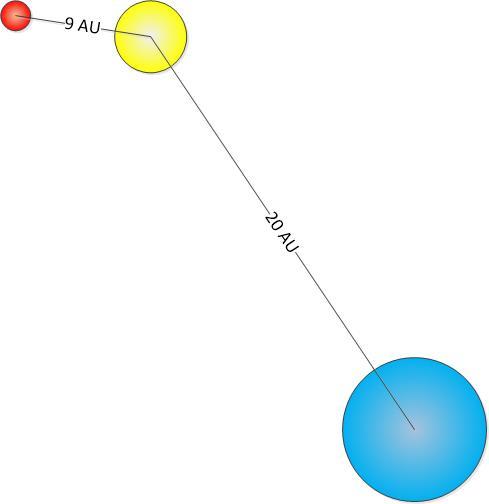
Pretty far! If the Sun orbits Alcyon at a distance more than 20 AU - about 3,000,000,000 km or a bit more than the distance from the Sun to Uranus - there would be no danger of the Blue sun stealing the Red sun away.
Also, at that distance Alcyon wouldn’t bake Earth, either. It’s be a very very bright blue star - and be easily visible during the day - but it would add very very little heat or light to the Earth.
Enjoy your three star system!

20 notes
·
View notes
Note
Would it be possible for a planet with two extreme altitudes (very low lowlands and very high mountain regions) to have two habitable zones separated by a layer of toxic air? Like an atmospheric sandwich with a breathable atmospheric layer in the lowlands, a non-breathable atmospheric layer in the middle, and a breathable atmospheric layer in the highlands.
Honestly - probably not. Atmosphere’s tend to mix a lot, with things at the bottom of the air blanket eventually making it’s way to the top and back down again. It’s part of having weather.

Also, the mixture of air that’s breathable has a general density which would almost certainly be different from a mixture of unbreathable, poisonous air. If the poisonous gases were more dense, they’d wind up at the bottom of the air blanket and fill your valleys and lowland. If they were less dense, they’d rise to the top of the atmosphere.Now that doesn’t mean it couldn’t happen, but it would probably not be a natural phenomenon. It could happen in an underground world where the poisonous gases lay in the low parts of tunnels and cut off some caves from others. But for a whole planet, it’d very likely have to be something unnatural. Pick the method - sci-fi force fields, magical waves, or whatever that separates the low-dwellers from the high-ups.

8 notes
·
View notes
Note
Would it be possible to have a planet where the points the Sun rises and sets change every 5 months? Would life as we know it be possible there?
Yes. You’re living on one of them (assuming you’re on Earth - if you aren’t, please tell me what planet you are on, and how you’re getting internet access).
Because of the tilt of Earths axis of rotation, the point on the horizon the Sun rises or sets will change as the year goes on. In the northern hemisphere, this point of sunrise slowly drifts north until the summer solstice, then drift back south until the winter solstice. Here, the Sun’s rising point will start to drift north again.
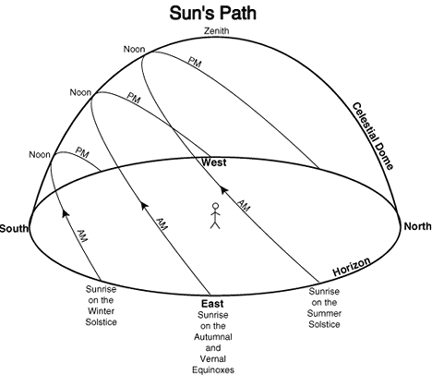
For the southern hemisphere, reverse it.
The Earth’s axis tilt is 23.5 degrees. If you increase the tilt, the Sun will sweep a larger area of the horizon between the solstices.
In the extreme case of a planet with a 90 degree tilt, the sun will sweep from north pole to south pole and every point in between as the planet spins around the sun on it’s side.
Uranus has an axial tilt of 98 degrees.
youtube
Uranus is all messed up.
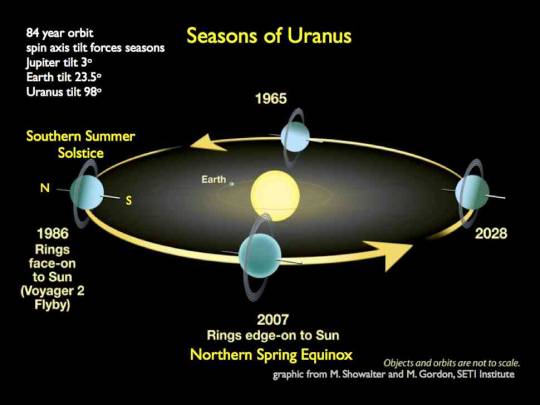
If you had an Earth-like planet with that degree of axial tilt, life would probably still be possible, but your days and nights and seasons would be all messed up.
For about three months, the northern hemisphere would be mostly in darkness while the southern was in light. For the next thee months, they would change places with days in the northern hemisphere getting longer and shorter in the southern hemisphere. this would continue until the southern hemisphere was in darkness and the northern bathed in light. Then, a reversing for the next three months until the norther hemisphere was once more in darkness.
Enjoy your really extreme seasons.
26 notes
·
View notes
Note
Hi! I was wondering if you knew what would happen in you took your helmet off in space? I'm contemplating having one of my characters do this.
Short answer: Nothing good, then death.Longer answer: Nothing really bad for a few seconds, then nothing good, then death.So, something has gone wrong on your space journey. You have been caught in a bad situation and have to expose yourself to space for a short amount of time. For some reason, you opened your helmet or something happened to it.
First things first: You will not explode, turn inside-out, instantly freeze, or instantly boil. You will not have your eyes bug out and the blood vessels in your face will not all pop.

Sorry, Arnie. You’ll be fine. For a little while.
From the moment you open your helmet and expose yourself to vacuum, you have about thirty seconds without anything really bad happening to you. If you are exposed to unfiltered sunlight, you will probably get a slight sunburn (pure UV rays will do that - the closer you are to the Sun, the worse it will be).
After that, things start to go bad really fast.
After about ten seconds or so, you’ll start to get some swelling of the skin (not a lot and easily survivable) and some dehydration of the eyes. Your ears will probably pop, and you’ll feel your tongue start to dry out. So far, you’re okay and will have no permanent effects - if you get back to pressure before thirty seconds or so passes.
After that, you will start to run out of oxygen, and will probably pass out at around thirty seconds. If you have some warning and are able to take several deep breaths before exposure, you can probably survive slightly longer. DO NOT TRY TO HOLD YOUR BREATH! If you do, the pressure difference will probably damage your lungs. Ask scuba divers about what happens if they hold their breath when ascending. Same thing. At this point, you’ll probably get some permanent damage - extreme sunburn, or lung damage.
After ninety seconds in vacuum, death is probably unavoidable. If you get back to pressure before then, you have a very good chance to recover.
Of course, these are just guesstimates. NASA generally doesn’t go around deliberately exposing their astronauts to vacuum. Generally.
However, it does happen. in 1965, Jim leBlanc was accidentally exposed to total vacuum while testing a moon suit prototype. In the accident, his suit pressure dropped from 3.8 psi to 0.1 psi in 10 seconds (normal atmospheric pressure is about 14.7 psi).
Luckily, it only took just over a minute to restore full atmospheric pressure to the test chamber, but people can survive at a lower pressure than 1 atmosphere. LeBlanc survived with nothing more damaging than an ear ache.Yes, there is footage of the event, and Jim leBlanc tells you himself what it felt like.
youtube
So, make sure you check your equipment before you leave your spaceship.
The life you save may be your own.
100 notes
·
View notes